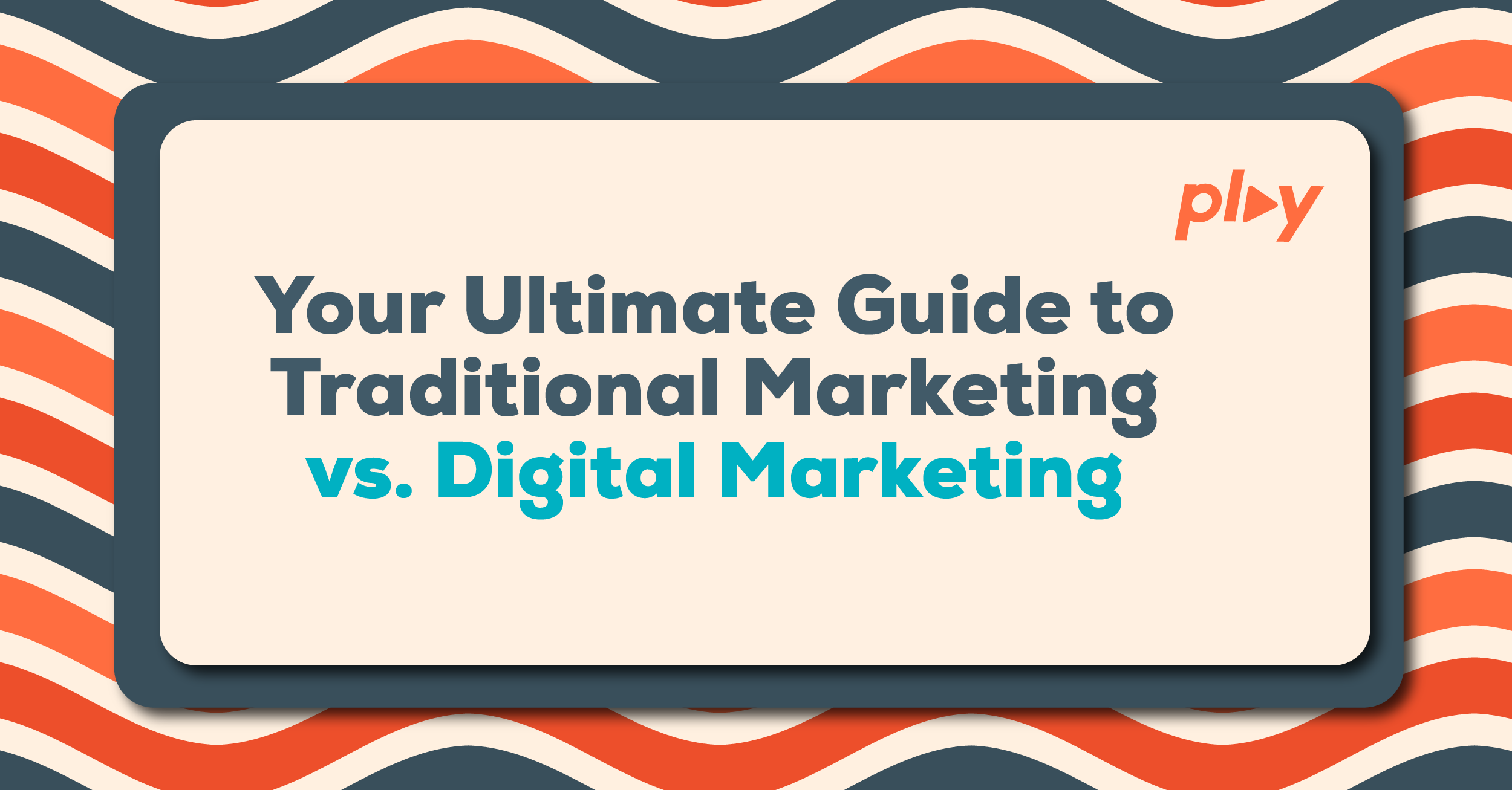Your Ultimate Guide to Traditional Marketing vs. Digital Marketing

Marketing has come a long way since the days of flyers and billboards. With the advent of the digital age, traditional marketing has taken a backseat to digital marketing. While both methods have their own advantages, digital marketing has become increasingly popular due to its cost-effectiveness and ability to reach a wider audience. As digital marketers, we’re passionate about getting our clients the most out of their budgets. Let’s discuss it!
Traditional Marketing
Traditional marketing typically includes print ads, billboards, television and radio commercials, and direct mail campaigns. Those marketing methods can be effective, but they can also be expensive and difficult to track. Measuring the return on investment, or ROI, of traditional marketing can be challenging, and it can also be difficult to determine how many people actually saw a specific advertisement. For example, if a client isn’t directly told how a prospective lead heard about them, they might not know whether that lead saw a billboard or heard a commercial on the radio.
We got our start as a marketing agency by creating print campaigns, so while we have a soft spot for them, it can be difficult to get your ROI when you are unable to track how many people actually take action based on the information in a mailer or a printed brochure. There are, however, ways to connect a landing page on a website with a print campaign. For example, putting a QR code on a mailer makes it possible to track landing page visits every time someone scans that code and visits it. However, our strategists have found that these are not as sophisticated of systems as the tracking available on digital advertising platforms.
Milia Marketing writes, “Running a traditional marketing campaign requires so much funding. When you add the media buy and the total cost of production (+ marketing costs), you’ll see that it costs a lot to keep it running.”
We have experience running both traditional and digital marketing. As a result, we can see major differences between a traditional TV spot and digital campaign visibility. We recently ran one 30-second TV spot for a client for an average cost of $37,500 with an assumed average reach of 325,000 impressions. This contrasts with the average monthly cost of this client’s digital ads, which sits at around $16,800 with an average number of 1.064 million impressions.
Our client’s entire TV campaign cost $187,000 and reached an assumed 1.3 million impressions over nine weeks; the digital ads have been running for six months with a budget of $100,800 and a data-backed 6.38 million impressions. In addition, this digital campaign still has six more months to gain results.
Digital Marketing
On the other hand, digital marketing includes a wide range of tactics, such as search engine optimization (SEO), social media marketing, email marketing, and content marketing. Digital marketing offers a more targeted approach, as marketers can directly target specific demographics and track the success of their campaigns in real-time. Digital marketing is typically less expensive than traditional marketing, also making it an attractive option for small businesses with limited budgets.
As a digital marketing agency, we’ve seen how different advertising platforms can work off of one another. For example, we can gain brand awareness from a Google Display campaign, lead those interested in a campaign to our client’s website, and then retarget those people on another platform like Facebook or Instagram. The tactics of our campaigns are often not linear, as opposed to other more traditional marketing strategies.
As the Economic Times writes, “Digital marketing is more effective in reaching and engaging target audiences because it allows firms to send personalized messages and adverts based on their interests and behavior.”
One of the biggest advantages of digital marketing is its ability to reach a wider audience. In today’s digital age, people spend a significant amount of time online, making it easier than ever to connect with potential customers. Social media platforms, like Facebook and Instagram, offer powerful advertising tools, allowing businesses to reach specific demographics based on age, location, interests, and more.
Within just one month, our digital advertising client, Unite Private Networks, spent around $9,500 within their Google Ads account and had over 500 conversions and a 9.98% conversion rate. This created an incredible outcome of about $19 per conversion.
Digital marketing also offers a level of personalization that traditional marketing simply cannot match. With the help of tools like marketing automation software, businesses can send targeted messages to individual customers based on their online behavior and preferences. This level of personalization helps build stronger relationships with customers and ultimately leads to higher conversion rates.
Using integrated software every month, we are able to pull client reports with relevant data points that show exactly how each digital campaign is performing. This creates trust between our team and clients, and also helps us understand when changes need to be made and what changes should be made within each account.
While traditional marketing can still be effective in certain situations, digital marketing has become the go-to method for many businesses due to its cost-effectiveness, ability to reach wider audiences, and advanced targeting capabilities. As technology continues to evolve, it is likely that digital marketing will continue to grow in importance for businesses of all sizes.
